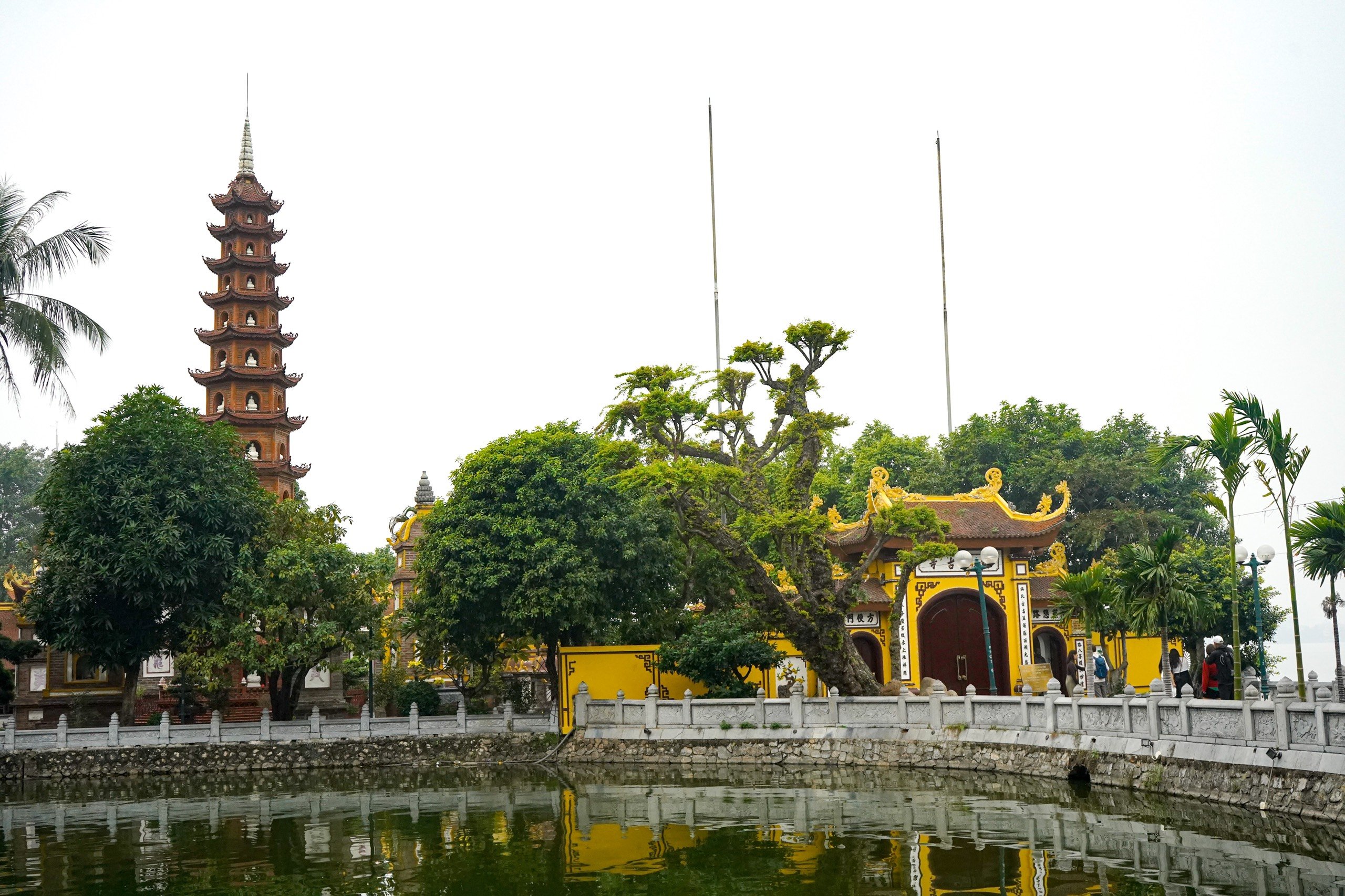Located on a small peninsula in the middle of West Lake, Tran Quoc Pagoda is an ancient pagoda over 1500 years old, once the headquarters of Thang Long Buddhism during the Ly - Tran dynasties. This is also where kings often came to pray and practice. With its unique architecture, the pagoda with its peaceful and majestic space has attracted millions of tourists every year, and was once honored by the British newspaper Daily Mail as one of the 16 most beautiful pagodas in the world.

From the outside, Tran Quoc Pagoda looks majestic and quiet on a small island of West Lake.
According to historical documents, Tran Quoc Pagoda was built in 541 during the Early Ly Dynasty with the original name of Khai Quoc Pagoda. At that time, the pagoda was located on the land of Yen Hoa village, which is Yen Phu village today. Through the dynasties, from King Le Thai Tong changed the name to An Quoc, King Le Hy Tong changed the name to Tran Quoc, to King Thieu Tri changed the name to Tran Bac, the pagoda has gone through many events and many grand restorations. However, people still call this pagoda by its old name, Tran Quoc, and it has kept it until today.
Under the reign of King Minh Mang and King Thieu Tri, the pagoda was renovated and expanded, with more statues and bells cast. Despite thousands of years of history, Tran Quoc Pagoda still retains its solemn beauty, is a unique cultural relic of the country, attracting many Buddhist followers and visitors, tourists from inside and outside Vietnam to visit.
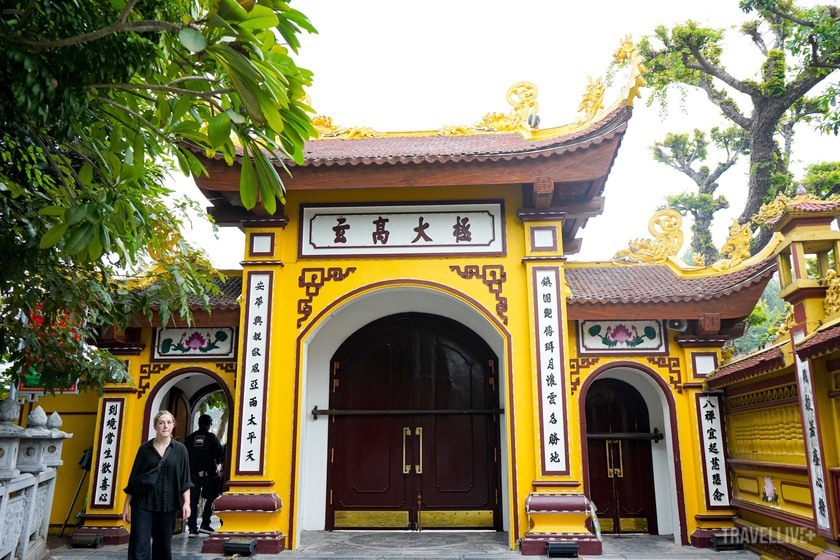
The main gate of the temple.
Architecture of Tran Quoc Pagoda
In terms of architecture, the interior of the temple is designed in a distinctive Buddhist style. From afar, the entire temple looks like a blooming lotus. The temple space is in harmony with nature and the surrounding environment, creating an ideal space for those who want to find tranquility in the middle of the city.

Reflected on the lake surface.
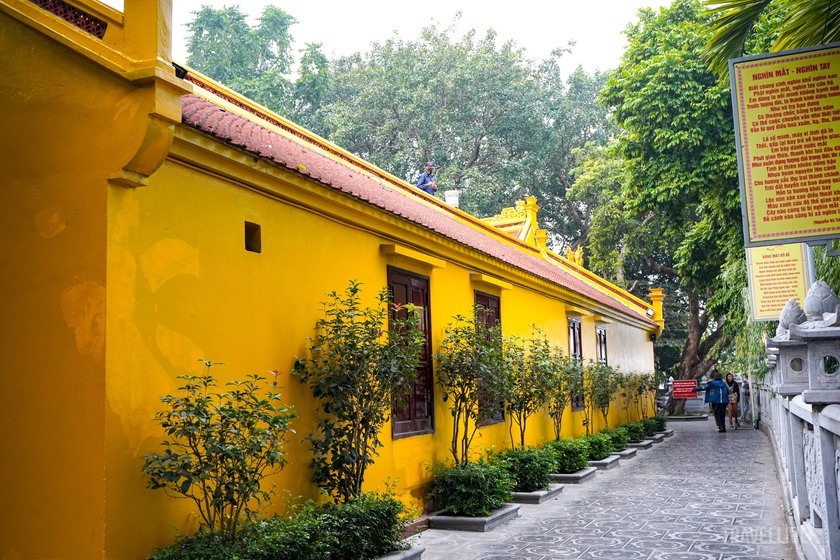
Tran Quoc Pagoda is surrounded by lush trees and the West Lake with its unexpectedly high waves. Famous scholars such as Nguyen Huy Luong, Ho Xuan Huong, Pham Thai, Ba Huyen Thanh Quan... used to walk around here and left behind wonderful works.
Although it has undergone many renovations and restorations, Tran Quoc Pagoda still maintains its strict architectural style according to Buddhist principles. The structure of the pagoda consists of many layers of houses, with three main buildings: the front hall, the incense burning house and the upper hall arranged in the shape of the letter Cong. The front hall faces west, on both sides are the incense burning house and the upper hall, followed by the bell tower. On the right of the pagoda is the ancestral house, on the left is the stele house. In the pagoda grounds, there are still 14 valuable historical steles, recording in detail the process of formation, restoration and repair of the pagoda.
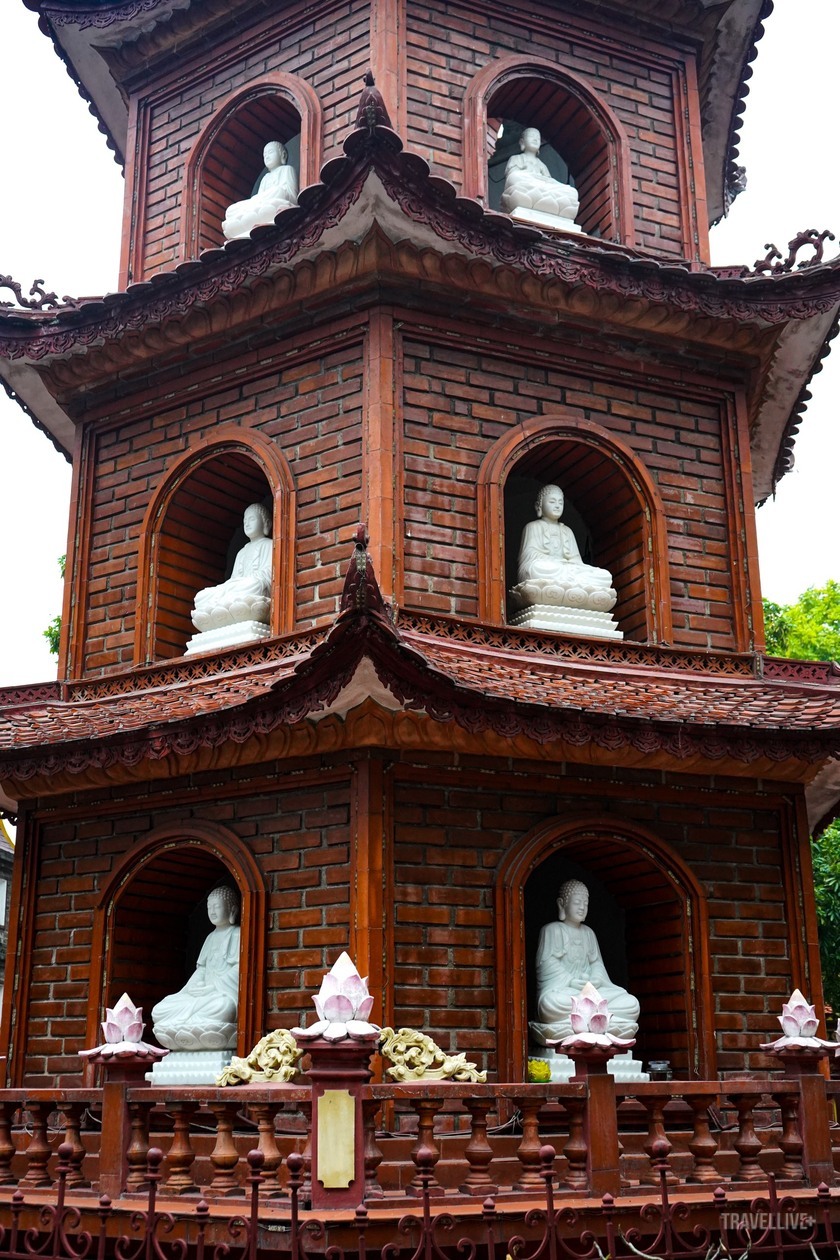
At each floor of the tower, there is a white gemstone statue of Amitabha Buddha placed at each arched window.
In addition, with an area of over 3000 m2, the pagoda also has a 11-storey lotus stupa 15 m high. Each floor of the tower has 6 arched windows, in each window there is a statue of Amitabha Buddha made of precious stones. On top of the tower is a Nine-grade lotus throne also made of precious stones.

After visiting the stupa, tourists can burn incense and perform rituals in the main hall.

The upper hall in Tran Quoc Pagoda.
Until now, this pagoda still preserves many valuable Buddha and Bodhisattva statues, placed mainly in the Upper Hall. The most prominent of which is the statue of Buddha Sakyamuni entering Nirvana, made of gilded lacquer and wood. This is the most beautiful Nirvana statue in Vietnam.
Going around the back of the pagoda, visitors will admire the Bodhi tree that provides shade in a corner of the yard. What is special is that this Bodhi tree was grafted from the same tree where Buddha Shakyamuni attained enlightenment more than 25 centuries ago. Indian President Rajendra Prasad brought this Bodhi tree as a gift when he visited Hanoi in 1959.
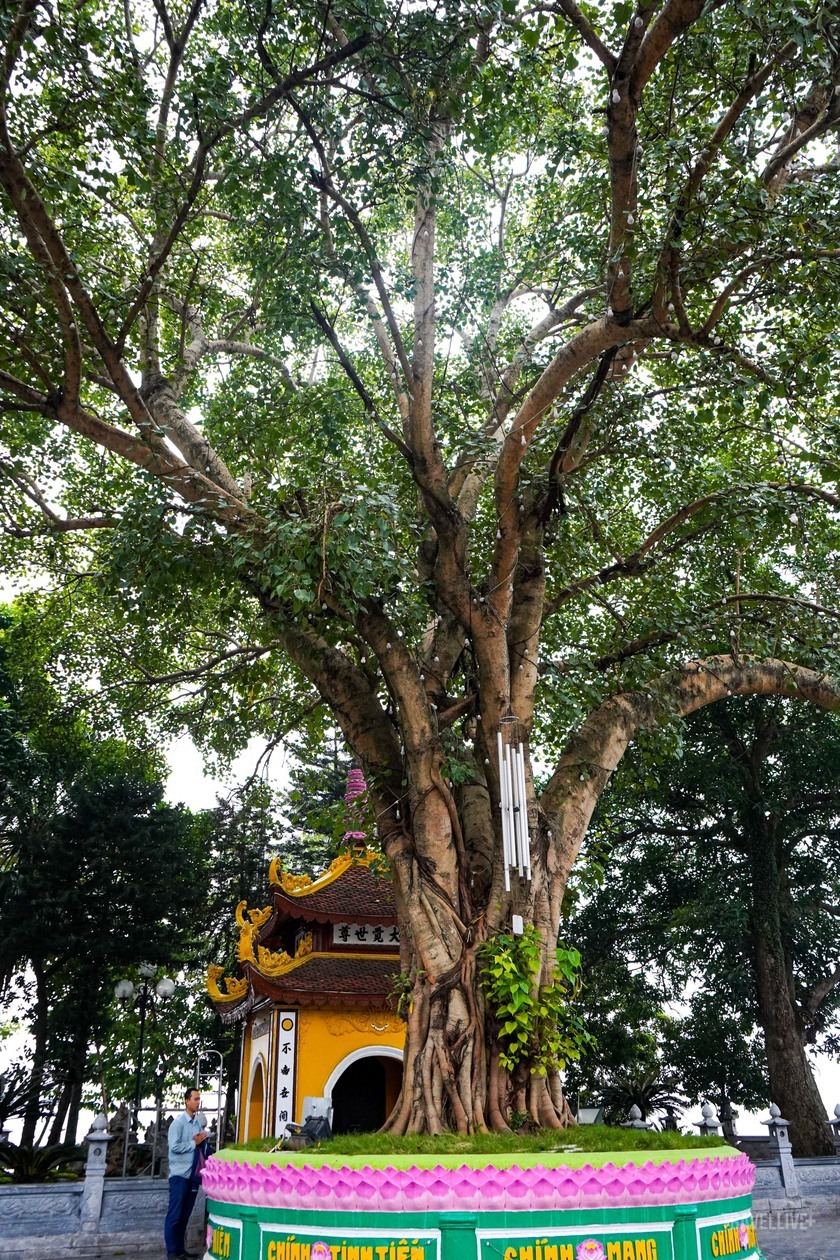
Visitors should not miss a very spiritual natural area of the pagoda, which is the Bodhi tree planted at Tran Quoc Pagoda.
Values that last forever
The ancient Tran Quoc Pagoda, belonging to the Northern Sect, is a place of worship for Buddha Sakyamuni, Bodhisattva Avalokitesvara and Buddha Amitabha. In addition, the pagoda also has an area to worship the gods Quan Vu, Quan Binh, Chu Thuong, Duc Ong and their attendants, creating a sacred space with diverse beliefs.
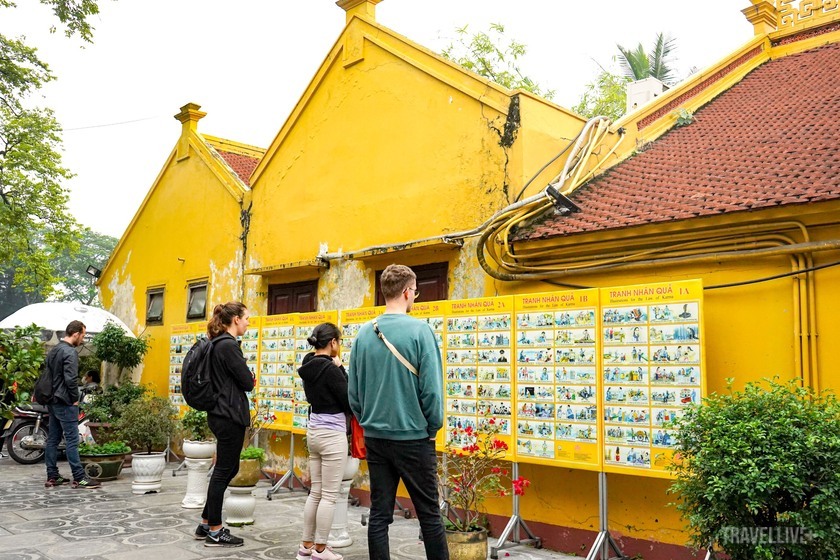
In the temple grounds there are also very good and meaningful paintings of Cause and Effect.

Every day this place welcomes a large number of domestic and foreign tourists.
Highly appreciated by the French School of the Far East for its historical and architectural value, Tran Quoc Pagoda is ranked in the top 10 works of Indochina. Despite many difficulties in the preservation process, the pagoda still retains its unique cultural beauty. In 1962, this place was recognized as a National Historical - Cultural Relic, affirming its important role in Vietnam's cultural heritage.
Tran Quoc Pagoda is the pride of Vietnamese Buddhism, a destination bearing the mark of national history and culture. Today, the pagoda is not only a place of worship for Buddhists but also a prominent spiritual meeting place in Hanoi, attracting a large number of tourists who seek serenity and peace in their journey to find Buddhism.





